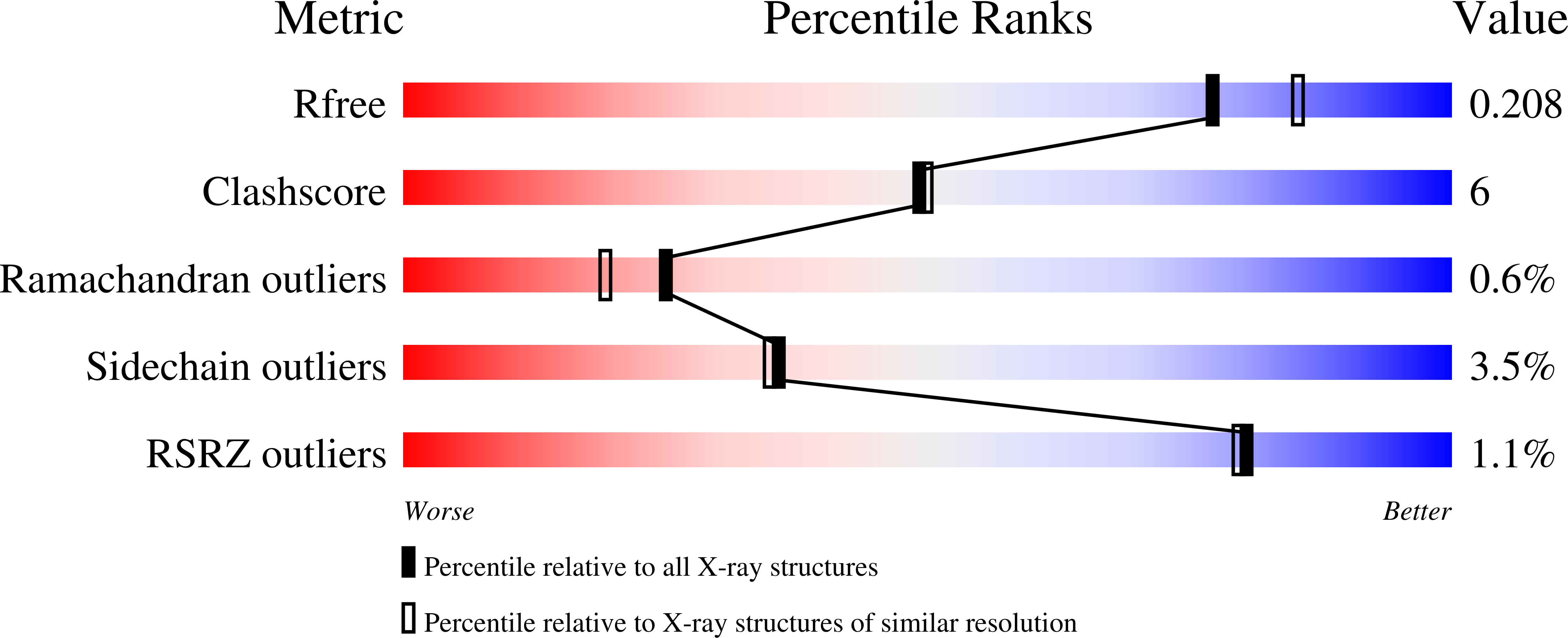Differential Recognition and Hydrolysis of Host Carbohydrate-Antigens by Streptococcus Pneumoniae Family 98 Glycoside Hydrolases.
Higgins, M.A., Whitworth, G.E., El Warry, N., Randriantsoa, M., Samain, E., Burke, R.D., Vocadlo, D.J., Boraston, A.B.(2009) J Biol Chem 284: 26161
- PubMed: 19608744
- DOI: https://doi.org/10.1074/jbc.M109.024067
- Primary Citation of Related Structures:
2WMF, 2WMG, 2WMH, 2WMI, 2WMJ, 2WMK - PubMed Abstract:
The presence of a fucose utilization operon in the Streptococcus pneumoniae genome and its established importance in virulence indicates a reliance of this bacterium on the harvesting of host fucose-containing glycans. The identities of these glycans, however, and how they are harvested is presently unknown. The biochemical and high resolution x-ray crystallographic analysis of two family 98 glycoside hydrolases (GH98s) from distinctive forms of the fucose utilization operon that originate from different S. pneumoniae strains reveal that one enzyme, the predominant type among pneumococcal isolates, has a unique endo-beta-galactosidase activity on the LewisY antigen. Altered active site topography in the other species of GH98 enzyme tune its endo-beta-galactosidase activity to the blood group A and B antigens. Despite their different specificities, these enzymes, and by extension all family 98 glycoside hydrolases, use an inverting catalytic mechanism. Many bacterial and viral pathogens exploit host carbohydrate antigens for adherence as a precursor to colonization or infection. However, this is the first evidence of bacterial endoglycosidase enzymes that are known to play a role in virulence and are specific for distinct host carbohydrate antigens. The strain-specific distribution of two distinct types of GH98 enzymes further suggests that S. pneumoniae strains may specialize to exploit host-specific antigens that vary from host to host, a factor that may feature in whether a strain is capable of colonizing a host or establishing an invasive infection.
Organizational Affiliation:
Biochemistry and Microbiology, University of Victoria, Victoria, British Columbia V8W 3P6, Canada.















